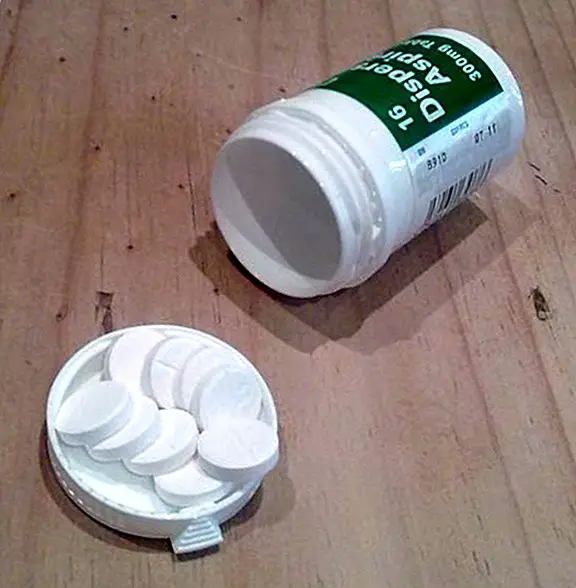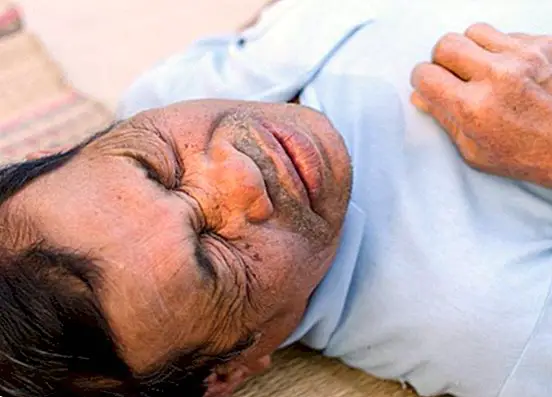What is psoriasis, symptoms, causes and treatment
Of the different diseases and pathologies that can affect the skin, the psoriasis it almost certainly becomes one of the most popular, not only because it is known, but because it is one of the ones that most affects a large number of people.
In fact, it is estimated that psoriasis affects around 2 to 3% of the world population, while in Spain it is estimated that it can affect around one million people. It is believed to have a higher prevalence in men than in women.

What is psoriasis?
Psoriasis is a chronic skin disease, whose main symptom is the flaking and inflammation of affected parts of the skin, which in turn causes the appearance of swelling, warming, discoloration and pain.
When there is no type of problem that affects the skin, regularly the different skin cells tend to grow from the deeper layers, rising to the surface slowly. These cells are replaced constantly, so that the dead cells present on the surface end up being eliminated. It is what is known as cell renewal, and usually takes around a month.
However, when there is psoriasis, cell renewal occurs in just a few days, so that new skin cells tend to rise very quickly, eventually accumulating on the surface.
As a result of this, and as we will see in the section intended to know which are the most common symptoms of psoriasis, it ends up forming thick skin plates and patches, reddened and with the presence of scales of silver appearance. It is these plates that can precisely cause itching and pain.

What are your causes?
It is known for sure that psoriasis starts in the immune system, from the T lymphocytes, white cells present in the blood fundamental to protect the organism against infections and diseases.
In fact, when there is psoriasis, the T lymphocytes tend to be activated inappropriately, causing the activation of other immune responses, which produces rapid cellular replacement of the skin and swelling.
Although it can occur at almost any age and is much more common in adulthood (especially in the fifth decade of life), when it occurs in young people occurs especially in those individuals with a family history, especially between 16 to 20 year old.
In any case, as we indicated, psoriasis tends to appear in the form of outbreaks, for this reason people who suffer from it can observe how their skin improves sometimes and sometimes worse. Among the factors that can influence this deterioration we can mention the following:
- Stress, nervousness and psychological tension.
- Chronic infections, either viral or bacterial.
- Changes in climate that tend to dry the skin.
- Excess or decrease in sun exposure.
- Consumption of certain medications, such as lithium, beta-blockers or antimalarial drugs.
- Overweight and obesity.
- Hormonal changes.
- Excessive consumption of alcoholic beverages.

What are the symptoms of psoriasis?
The main symptom of psoriasis is the appearance of red patches or spots on the skin, that with the passage of time will have a scaly appearance, being common that small protuberances arise around the affected area.
These lesions may be small in size or yet spread and occupy large areas. However, it is common that these are located in different areas or parts of the body, although the most common is to find them in the scalp, extremities and back.
Unlike what is mistakenly thought, Psoriasis is not contagious.
Types of psoriasis
Depending on how psoriasis manifests, we can differentiate between different types, based on the classification based on the severity, shape and pattern of the aforementioned scales:
- Plaque or common psoriasis:It is the most common, affecting about 80% of cases. Its symptoms include the appearance of spots and reddish plaques on the scalp, trunk, arms and legs and also on the genitals.
- Erythrodermic psoriasis:It affects most of the body. It causes a very aggressive redness.
- Psoriasis in gout: It manifests as small spots, reddened on the scalp, trunk and limbs. It appears especially in children, and it is common that it arises after strep throat.
- Pustular psoriasis:It is very rare. It is characterized by the appearance of areas of reddened skin that end up giving rise to blisters with pus (pustules). It is more painful.
- Reverse psoriasis:no scales appear, causing only inflammation and redness, also occurring in the armpits, groin, breasts, buttocks and in the folds of the genitals.

How is it diagnosed?
Since sometimes the symptoms tend to look a lot like those that arise in other skin diseases, it is possible that psoriasis is difficult to diagnose, especially when it is a mild case.
However, when the symptoms are evident, the diagnosis relies precisely on the clinical signs. It is common for the doctor to examine the lesions, prescribing appropriate treatment.
But it may be possible to perform a skin biopsy, which involves the removal of a sample of tissue from the skin and subsequent analysis under a microscope.
Treatment
The treatment of psoriasis seeks mainly to improve and reduce symptoms, as well as to prevent possible infections that may occur from outbreaks:
- Substances for topical use:especially creams and lotions with anthralin or coal, with moisturizing qualities, retinoids, keratolytics, topical corticosteroids and anti-dandruff shampoos.
- Phototherapy:based on controlled exposure to ultraviolet light (UVA or UVB).
- Medications and systemic drugs:for example, drugs with vitamin A or vitamin D, immunomodulators, metrotrexate or biological drugs.


